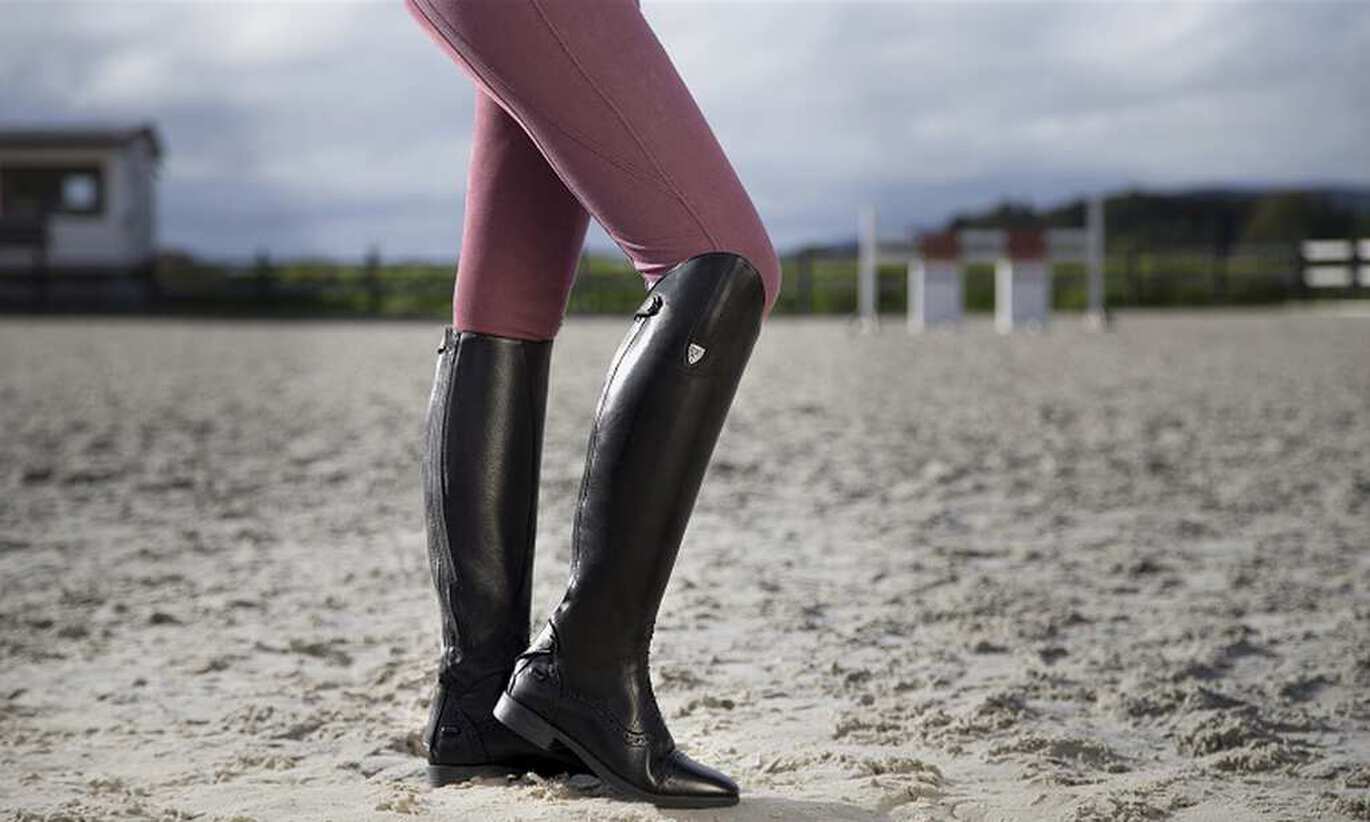
Leather riding boots that fit you perfectly are always a little too long on the leg and can therefore pinch a little at the back of the knee at first. However, as all leather riding boots become shorter at the ankle, this problem will soon disappear. Areas that you can protect with plasters are the heel, ankle and the back of the knee. Other parts of the foot should not be too tight if the boots fit correctly. You can make it a little easier by oiling the riding boots in the affected areas more often.
Be careful not to overdo it, though, so that the boots don't look greasy. Before you get on your horse for the first time with your new leather boots, you should walk with the boots for a while until you feel that you can move your heel reasonably flexibly. This may even take a few days, depending on the boot. Don't take on too much during your first few rides in your new boots. Jump training or a brisk cross-country ride with short stirrups may still be too much. Instead, opt for exercises with slightly longer stirrups.

With leather chaps and gaiters you usually won't have as much trouble as with leather boots. The reason for this is that there are often built-in elastic bands in the zip. Leather chaps are usually made of slightly thinner material than leather boots. Nevertheless, if they fit properly, leather chaps are always a little too long at first and can also press into the back of your knee. They usually do not cause any problems in the ankle area. Here, too, it is advisable not to buckle the stirrups too short during the first few rides to avoid chafing in the back of the knee.

Like leather shoes, short riding boots can first be broken in at home until they have adapted to the shape of your foot. As a rule, this should not take very long and you will soon be able to enjoy riding in your new boots.

After the short break-in period, you will be able to enjoy your leather products for a long time, because they will be individually adapted to you. Always clean the boots immediately with mild saddle soap and lukewarm water and oil the movable parts (ankle, back of the knee) from time to time with a good leather cream. You can also treat the rest of the boot with shoe polish from time to time to preserve the colour, shine and strength of the material.
